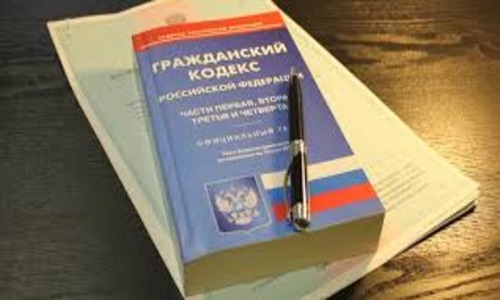LIBOR is the average interbank interest rate at which banks provide short-term loans that are not covered in the London financial market. LIBOR is the acronym for London InterBank.

LIBOR is published in seven maturities (from one day to twelve months) and in five different currencies.
LIBOR indicators are published daily at about 11:45 (GMT).
LIBOR is an interest rate that is subject to close monitoring by professionals and individuals, as it is used as a key indicator. The latter is monitored by banks and other credit and financial institutions. Thus, a decrease and increase in LIBOR rates can affect the level of interest rates for various banking products, including savings accounts, mortgages and loans.
Origin of LIBOR
In the early eighties of the last century, the need for references to types applicable to loans arose in London financial institutions. This data was especially necessary for pricing financial products, such as interest rate and option swaps. Led by the British Bankers Association (BBA), a number of steps have been taken since 1984 that led to the publication of the first types of LIBOR (bbalibor) in 1986.

The procedure for the formation of LIBOR
LIBOR is the average value by which banks provide money to each other. These banks are the best banks identified in the financial market of London. The selection is made annually with the support of the Foreign Exchange and Money Markets Committee (FX & MMC). For each currency formed between 8 and 16 banks, it is considered the key in this currency in the London money market. These banks are valued based on their size in the market, their reputation and alleged competence in the respective currency. Since the criteria are strict, rates can be considered in general terms as the minimum interbank rates of the London money market.
LIBOR Definition Method
LIBOR bets are not based on real transactions. On all business days, around 11:00 (GMT), selected banks provide Thomson Reuters with interest rates at which they expect to receive a significant loan in the interbank money market at that time.

The reason transactions are not real is because not all banks borrow substantial amounts daily. As soon as Thomson Reuters collects data from all banks, 25% of the upper and lower values are excluded. The average value of the remaining 50% of the “average values” is the official LIBOR (bbalibor). Thus, the Libor value is formed - a bet on the calculation date.
The Importance of LIBOR Types
LIBOR is considered the main marker in the world for short-term interest rates. Used in professional financial markets as the basis for many financial products such as futures, options and swaps. Banks also often use LIBOR interest rates as the basis for determining interest rates on loans, savings accounts, and mortgages. The indicator is often considered as the basis for other products. This is the reason that they are of great worldwide interest to many professionals and individuals.
Currencies in which LIBOR markers are calculated
Initially (in 1986), LIBOR was published for three currencies: the US dollar, the pound sterling and the Japanese yen. Subsequently, the number of LIBOR currencies increased to its maximum - sixteen. Some of these currencies were combined in euros in 2000.

LIBOR rates are currently set in five currencies.This is the US dollar, euro, yen, pound sterling, Swiss franc.
Dates for which LIBOR bets are settled
Due to the availability of seven different loan terms, there are seven types of LIBOR from one day to 365 days.
LIBOR Manipulation
LIBOR rate is one of the key financial indicators in the modern international finance market.
Based on this indicator, more than 550 billion dollars of contracts are concluded in the world. Therefore, the manipulation of the rate is extremely attractive both for the private banking sector and for government institutions.
For example, it is already known that in the past the United States put pressure on the United Kingdom to adjust the interest rate.
In 2008-2009, 16 banks in Europe, Japan and the United States were under investigation on suspicion of manipulating the benchmark that is used in many loan contracts worth trillions of dollars worldwide. For example, in the USA, up to 60% of all mortgages and subprime mortgages are tied to LIBOR indicators.
During an investigation by the Federal Bureau of Investigation, it was found that the world's major banks benefited from manipulating the LIBOR rate in their own interests. Barclays was the first bank to admit these violations, and to close the investigation of his case, he agreed to pay a fine of $ 453 million.
By managing Libor's performance, banks could make their balance sheets healthier than they really were. This demonstrates the greed and corruption that invaded the global financial system.
Application of LIBOR
Article 395 of the Civil Code of the Russian Federation. Responsibility for failure to fulfill a monetary obligation
1. In cases of unlawful retention of funds, evasion of their return, other delay in their payment, interest on the amount of the debt shall be payable. The amount of interest is determined by the Bank of Russia key rate that was in effect in the relevant periods. These rules apply, unless otherwise specified by law or contract.
2. If the losses incurred by the creditor in the unlawful use of his money exceed the amount of interest due to him on the basis of paragraph 1 of this article, he has the right to demand compensation from the debtor for the loss in part that exceeds this amount.
3. Interest on the use of borrowed funds shall be charged on the day the amount of these funds is paid to the creditor, if a shorter period is not established for the calculation of interest by law, other legal acts or an agreement.
4. In the event that by agreement of the parties a penalty has been provided for non-fulfillment or improper fulfillment of a monetary obligation, the interest provided for in this article shall not be recoverable, unless otherwise provided by law or contract.
5. The calculation of interest on interest (compound interest) is not allowed, unless otherwise provided by law. For obligations performed by the parties in carrying out business activities, the use of compound interest is not allowed, unless otherwise provided by law or contract.
6. If the amount of interest payable is clearly disproportionate to the consequences of the violation of the obligation, the court at the request of the debtor has the right to reduce the interest stipulated by the contract, but not less than to the amount determined on the basis of the rate specified in paragraph 1 of this article.

As we can see, this article of the Civil Code also deals with interest and the procedure for calculating interest rates.
In legal practice in the Russian Federation, there are two approaches to determining these interest rates. The first approach recommends applying the LIBOR rate of 395 Art. Ledger for calculating interest. The second point of view is absolutely opposite and considers it unlawful to use the rate in these cases.
Thus, we see that the LIBOR indicator is a very important financial marker and financial instrument both in international monetary operations and for domestic use.









